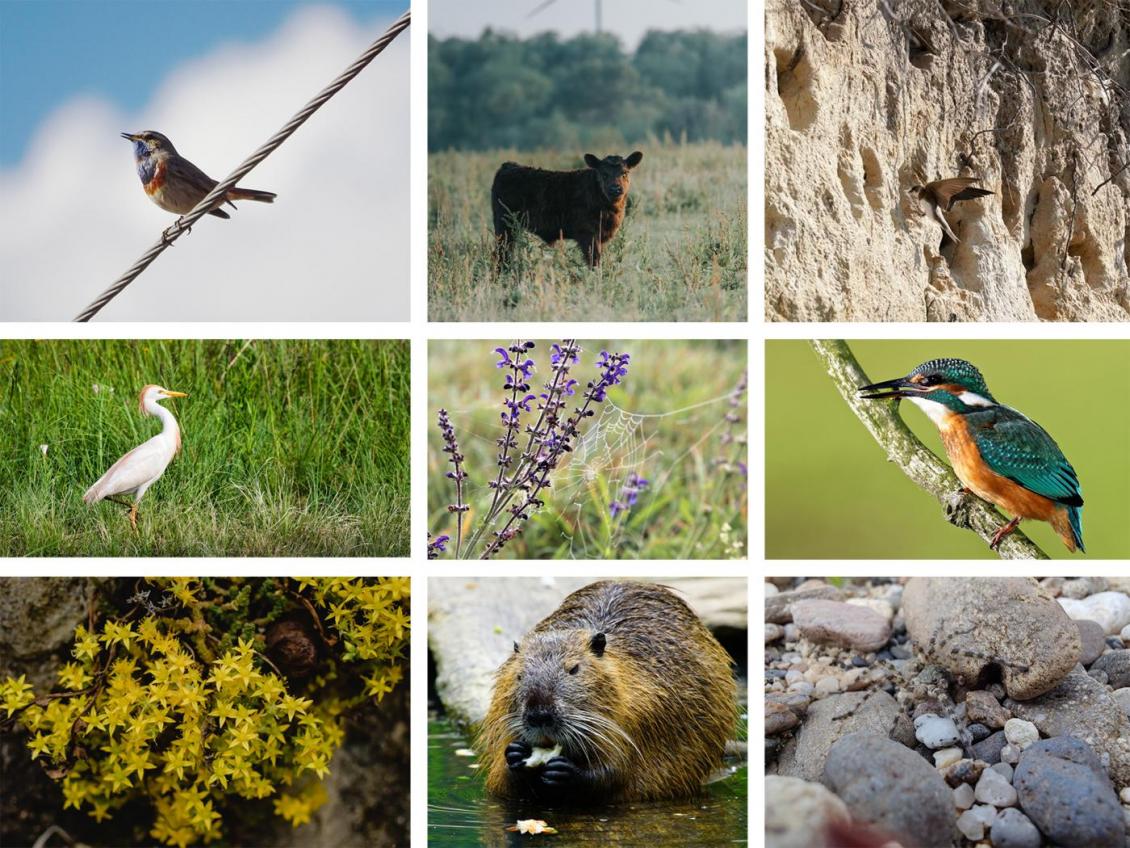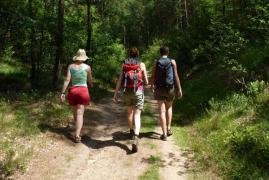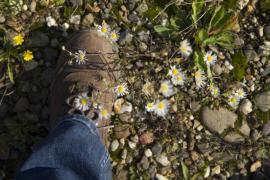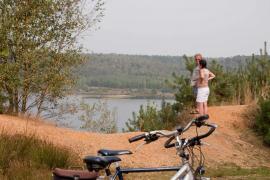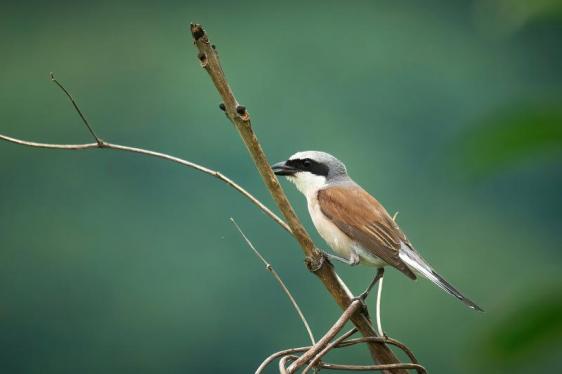
The Meuse Valley has a species richness strongly related to the river and its floodplains. Partial restoration of river dynamics has led to the re-emergence of gravel islets and riparian forests. The old meanders and side channels of the Meuse also harbour characteristic species. A number of old gravel pits with their ponds were enabled into the river system. Smaller ponds are also found in the Meuse Valley, with species such as the tree frog and the crested newt.
In the river, river lamprey, barbel, salmon and river rudd, among others, can be found. Shallow streams branch into the river, the Geul and Bosbeek being the largest. On the gravel banks of the river you will find pioneer species, a little higher up in the stream valley grasslands you will find meadow sage, meadow crown and breeding birds like whinchat or red-backed shrike.
Different types of vegetation
Where the vegetation is given room, riparian forests develop: groves that flood regularly or rarely. Softwood riparian forests (with willow, black poplar...) can be found in various places along the Meuse; they offer shelter and nesting places for birds and the beaver is very active there. Hardwood forest is much rarer but still occurs in Leut. You can spot wild garlic, snowdrops, warblers and middle-spotted woodpeckers. Broekbossen can be found in Vijverbroek and in the Kingbeek spring forest. In the nature reserves along the Meuse, year-round grazing is practised. Herds of galloways and konik horses ensure, each in their own way (grazing), that the landscape retains an open character, but also that a mosaic of grassland, scrub and riparian forest is created. Moreover, they spread seeds through their fur. Besides the nature reserves, a considerable part of the Meuse Valley consists of agricultural land and inhabited areas. There, too, many species can be found that benefit from the vastness (field birds) or just from small landscape elements such as heritage trees or hawthorn hedges.
The fauna and flora along the Meuse is monitored every 10 years on both banks under the name 'Maas in Beeld'. On the accompanying web page you can read the latest monitoring report..
Some typical species from the Meuse Valley
